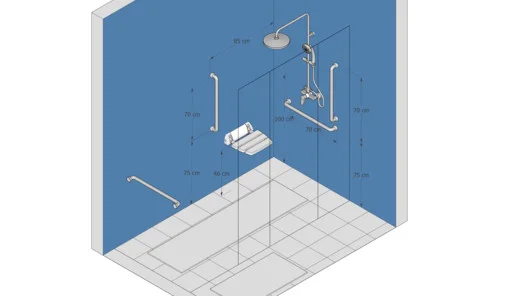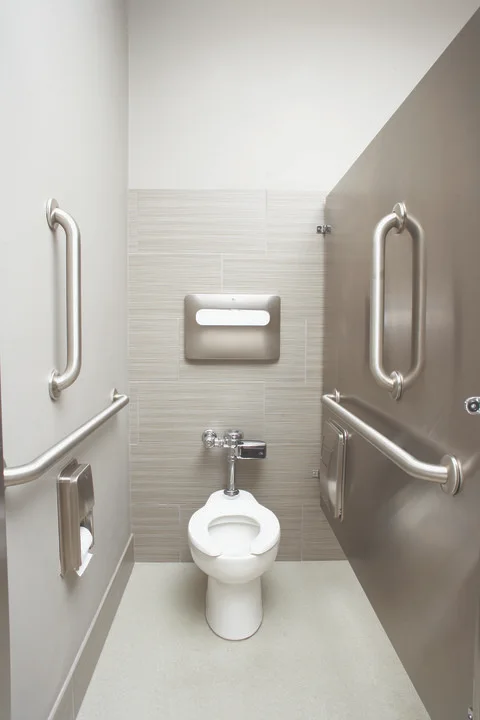As people age, their physical capabilities can change, making them more prone to falls and accidents. Bathrooms, particularly toilets, can be hazardous areas due to slippery floors, tight spaces, and hard-to-reach fixtures. To create a safe and comfortable bathroom for the elderly, consider the following design tips:
Bathroom Access
- Ensure a clear path to the bathroom without barriers or loose objects.
- Install light sources on the way to the bathroom with easily accessible switches.

Doors
- Design doors that are at least 80 cm wide and can be opened easily and intuitively.
- Consider using lever knobs or removing locks for easier access.

Flooring
- Use non-slip materials such as ceramics, boards, or rubberized floors.
- Avoid rugs that can cause slips and falls.
Toilets
- Install toilets that are higher than conventional height (around 46 cm) to ease sitting and standing.
- Ensure toilets are tightly attached to the floor or wall.
Grab Bars
- Install grab bars near the toilet and shower to assist with balance and mobility.
- Use sturdy materials like aluminum or stainless steel and secure them tightly to the wall.

Faucets
- Use lever taps or faucets with electric sensors for easier handling.
Shower Box
- Design a shower box that is at least 80 cm wide and avoid bathtubs.
- Consider adding a folding support stool and an additional shower head.

Elderly Bathroom Alert System
- Install doorbells, alarms, or emergency buttons that can be easily accessed in case of an emergency.
- Consider connecting to telecare companies for quick response.
Conclusion
By incorporating these design tips, you can create a safe and comfortable bathroom for the elderly, reducing the risk of accidents and injuries.









